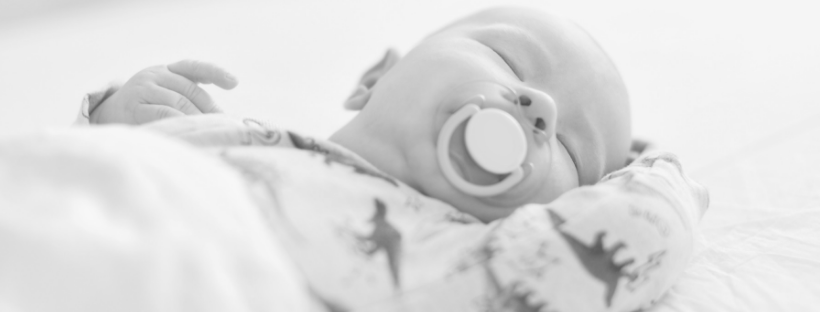There is a lot of conflicting information floating around Facebook mom groups as to how your baby should sleep and what is safe. At Blissful Birthing we take safe sleep very seriously. We feel it is important that expecting and new parents receive accurate information regarding current professional recommendations for safe sleep so they can make the right decision for their family. These recommendations are based on current guidelines by the American Academy of Pediatrics (AAP) and Center for Disease Control (CDC).
Current Safe Sleep Recommendations
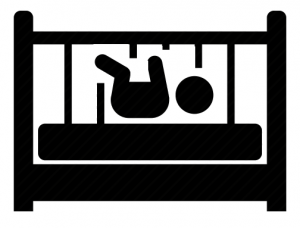
Baby should always sleep alone, on a firm, flat surface. The mattress should be covered with a fitted sheet, only. No other bedding or soft objects should be present. The AAP does not regard mattress toppers/pads as safe. They also recommend room sharing, but not bed sharing for at least the first six month, but ideally the first year. The crib should not be near electric or window covering cords as they pose a strangulation risk.
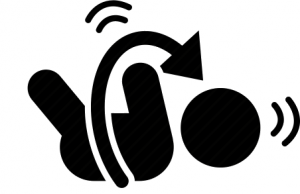
Once an infant can roll, he can remain in the sleep position he assumes. Practicing supervised, awake tummy time daily, helps baby to strengthen his muscles. However, once baby begins showing signs of readiness to roll over, baby should no longer be swaddled when sleeping.
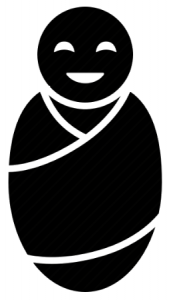
Babies can be swaddled. This practice is safe until baby begins to show readiness to roll over. Swaddling is safe as long as baby is sleeping on his back, only. The swaddle should not restrict baby’s breathing or hip and leg movement. Once baby can no longer be safely swaddled, a wearable blanket is the safest option for sleeping.
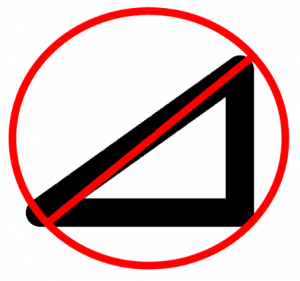 Elevating the head of the infant’s crib is no longer recognized as safe. This elevation has been found ineffective in reducing gastroesophageal reflux. Elevation may result in the infant sliding to the foot of the crib into a position that can compromise respiration.*
Elevating the head of the infant’s crib is no longer recognized as safe. This elevation has been found ineffective in reducing gastroesophageal reflux. Elevation may result in the infant sliding to the foot of the crib into a position that can compromise respiration.*
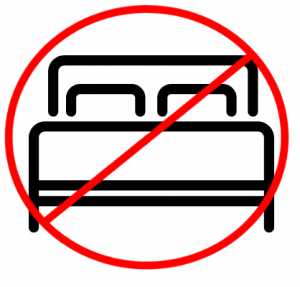 Baby should never be placed on a bed to sleep. Sheets, pillows, and blankets put baby at risk for entrapment and suffocation. You should not use portable bed rails for the same reason.
Baby should never be placed on a bed to sleep. Sheets, pillows, and blankets put baby at risk for entrapment and suffocation. You should not use portable bed rails for the same reason.
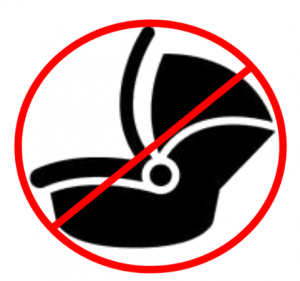 Sitting devices are not recommended for routine sleep. If your baby falls asleep in their: car seat, Rock n Play, stroller, infant carrier, or sling, put them on their back to sleep as soon as possible. These devices are particularly risky for babies younger than 4 months. The position these devices put baby in can compromise their airway.
Sitting devices are not recommended for routine sleep. If your baby falls asleep in their: car seat, Rock n Play, stroller, infant carrier, or sling, put them on their back to sleep as soon as possible. These devices are particularly risky for babies younger than 4 months. The position these devices put baby in can compromise their airway.
If your baby falls asleep in a sling or cloth carrier, the following precautions should be taken:
- make sure baby’s head is up and above the fabric.
- ensure your baby’s face is visible and their nose and mouth are free of obstructions.
- reposition your baby to a safe position after nursing.
Other Sleep Considerations to Reduce SIDS Risk
- Breast milk is recommended. The protective effects against SIDS increase with exclusivity, but any amount of breast milk offers protection. If possible, breast milk should be the exclusive source of nutrition for at least the first six months.
- Obtain routine medical care. This applies to prenatal care for the mother, as well as regular well-baby visits to the pediatrician.
- Skin-to-Skin should be practiced after delivery when mom and baby are medically stable. You should practice skin-to-skin regardless of how baby was delivered or if baby will be breast or formula fed.
- Pacifiers are recommended. The mechanism of protection is still unknown. You do not need to force the pacifier on your baby. If their pacifier falls out when sleeping it does not need to be reinserted. You should never tether a pacifier to your baby when he is sleeping. Stuffed animals attached to a pacifier are not safe for sleeping.
- Avoid smoke exposure during pregnancy and after baby has been born.
- Avoid alcohol and illicit drug use. Baby is at an increased risk of death when a parent consumes alcohol in conjunction with bed sharing.
- Do not use at-home cardiorespiratory monitors. They have not been proven to reduce the risk of SIDS.
Common Myths About Safe Sleep
Your baby should sleep on his side to help clear his lungs.
The nurses at the hospital may give this advice after delivery. It is important to note “there is no evidence that placing infants on their side during the first few hours after delivery promotes clearance of amniotic fluid and decreases the risk of aspiration.*” Always place your baby on his back to sleep, especially when swaddled.
My baby needs to remain on his back all night. If he rolls over while sleeping I need to roll him back.
“Once an infant can roll from supine [(on their back)] to prone [(on their belly)] and from prone to supine, the infant can be allowed to remain in the sleep position that he or she assumes.*”
Other Blogs You May Like
Oh, Baby! Take Your Shirt Off!
Delaying Your Baby’s First Bath
Babywearing: Safely Wear Your Baby
Resources
*SIDS and Other Sleep-Related Infant Deaths
How to Keep Your Sleeping Baby Safe: AAP Policy Explained
Safe Sleep for Babies
CDC Offers Refresher on Safe-sleep Practices for Infants
Safe Sleep
This post is for informational purposes only. It does not take the place of consultation with your baby’s pediatrician. This post does not diagnose, treat, cure, or prevent any disease.

